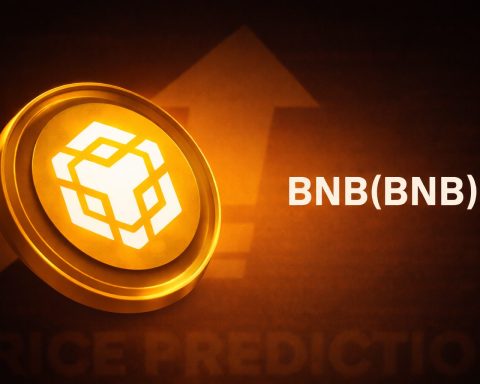- Sharp Pullback: FHN shares plunged about 13% on Oct 15, 2025, to roughly $20 – the biggest one-day drop since May 2023 [1]. Earlier that day, FHN opened near $23 (close to its 52-week high of $23.63 [2]) before collapsing on the earnings call.
- Earnings Beat: In Q3, First Horizon beat expectations – adjusted EPS $0.51 vs. ~$0.44 consensus, on $889M revenue vs. $847M forecast [3]. Net interest income rose $33M QoQ and net interest margin expanded to ~3.55% [4].
- Analyst Outlook: Analysts remain cautiously bullish. RBC Capital (Jon Arfstrom) maintained a Buy and lifted the price target to $27 [5], Barclays raised its target to $29 [6]. The consensus one-year target is about $25.3 (≈14% above pre-drop levels) [7]. Meanwhile, Raymond James cut its target to $23 after the stock swing [8].
- Banking Sector Rally: On Oct 15 U.S. banks broadly rallied on strong earnings – e.g. Morgan Stanley +4.7%, Bank of America +4.4% [9] – but FHN bucked the trend due to the unexpected M&A comments. The S&P banks index gained ~1.2% [10] that day.
- M&A Environment: The banking M&A backdrop is hot. Fifth Third’s ~$10.9B takeover of Comerica (announced Oct. 2025) is the largest deal so far this year [11]. First Horizon had itself been seen as a takeover candidate (after peer deals), but CEO Jordan’s remarks flipped that script [12].
- Macro Factors: The Fed has signaled rate cuts later in 2025 [13]. Analysts note that falling rates could boost loan demand but also compress bank margins. Economists point out the economy is steady – “people are spending… inflation and employment are within ranges that are reasonable,” one strategist said [14] – underpinning broad bank earnings.
Stock Performance and Recent Trend
According to market reports, FHN shares traded around $20 on Oct 15, 2025 after the selloff [15]. This was down ~13% from Wednesday’s open near $23.02 [16]. (FHN had just hit its 52-week high ~$23.63 earlier in October [17].) The share price briefly touched an intraday low of $19.99 [18]. For perspective, that is the steepest one-day drop since regulators derailed TD Bank’s planned $13.4 billion merger with FHN in May 2023 [19]. FHN’s 50-day and 200-day moving averages were near $22.5 and $20.7 respectively [20], so the plunge pushed the stock back towards longer-term support levels. Overall, FHN has been up modestly on the year, but this October slide wiped out recent gains.
Q3 Earnings and Guidance
First Horizon reported strong Q3 results on Oct 15, beating Wall Street expectations [21]. Adjusted earnings were $0.51 per share (16% above the $0.44 forecast) on $889 million of revenue (≈5% above estimates) [22]. Net interest income grew by ~$33 million and net interest margin expanded to about 3.55% [23], thanks to higher loan yields and gradual deposit repricing.
In prepared remarks, CEO Bryan Jordan said these results reflect “disciplined execution of our strategy” and noted that First Horizon’s “diversified business model and attractive geographic footprint position us well amid a changing environment” [24]. He added that “credit quality remains a strength, driven by prudent risk management” [25]. Management reiterated its targets for 2026: >15% adjusted return on tangible equity and mid-single-digit loan growth [26]. The bank plans to keep expenses roughly flat (as one research note put it, “[expenses] flat in 2026”) and focus on cross-selling to drive over $100M in extra revenue out of the existing franchise [27]. CFO Hope Dmuchowski said the firm has over $100 million of opportunities to pursue within its current customer base [28], reinforcing confidence in the outlook. In short, the fundamentals were solid – indeed, FHN trades at a low P/E (~13×) and analysts currently regard it as modestly undervalued given its growth (InvestingPro notes a PEG ~0.51) [29] – but investor sentiment turned on the strategic comments.
M&A Pivot and Stock Reaction
The market shock came from M&A commentary on the earnings call. Bryan Jordan signaled a strategic shift toward acquisitions: he said he was “increasingly confident in our ability to integrate a well-structured merger… if such an opportunity arises in 2026 or beyond” [30]. He emphasized that regulatory hurdles (like the $100B asset threshold) have eased and that First Horizon is scanning its 12-state footprint for “fill-in” deals with strong deposit bases [31]. This was a notable reversal, given that analysts had been expecting FHN to be bought by another bank, not the other way around. In fact, Raymond James observed that investors interpreted the CEO’s comments as a “shift in strategy,” especially since FHN had been flagged as a takeover candidate after Comerica’s sale earlier this year [32].
The strategy surprise triggered the share drop. Raymond James quickly lowered its 12-month target to $23 (from $25) and warned that FHN stock may now trade in a range – the firm said shares “could prove to be somewhat range bound in the nearer term” [33]. At the same time, RJ maintained its Outperform rating, noting a “positive risk-reward skew” from FHN’s position: the bank should benefit from lower interest rates for its counter-cyclical businesses and has an “elevated scarcity value” in the sector [34]. Truist analyst Brian Finneran similarly pointed out that investors now tend to “assum[e] that any bank saying they’re open to M&A is going to try to do a deal” [35] – highlighting how Jordan’s M&A enthusiasm took some by surprise. In short, the combination of a strong beat with this unexpected strategic cue drove the stock’s volatility.
Broader Market & Banking Context
First Horizon’s move came amid a rally in financial stocks. On Oct 15 the Dow Jones bank index rose ~1.2%, led by major banks beating forecasts [36]. For example, Reuters noted Morgan Stanley jumped 4.7% and Bank of America 4.4% after better-than-expected results [37]. Analysts attributed these gains to solid consumer spending and easing economic concerns – as one market strategist put it, “people are spending and the consumer seems to be fine,” with inflation and employment both “within… reasonable” ranges [38]. That upbeat backdrop contrasted with FHN’s drop.
In macro terms, Fed policy is a key factor. Fed Governor Michelle Bowman said on Oct 14 she expects two more rate cuts in late 2025 [39]. Falling rates tend to compress banks’ net interest margins (since loan yields drop faster than deposit costs) but also boost loan demand and economic activity. First Horizon is a beneficiary either way to some extent – analysts at RJ noted that lower rates should help its mortgage and lending pipelines [40] [41]. Meanwhile, deal activity is heating up: for example, Fifth Third Bank’s announced ~$10.9 billion acquisition of Comerica (announced Oct. 6) shows increased consolidation among regional banks [42]. This environment makes First Horizon’s own M&A signals especially noteworthy.
Analyst Forecasts and Outlook
Looking ahead, Wall Street models show modest upside for FHN, assuming management executes. The average analyst target is about $25.3 [43] – implying roughly a 14% gain from recent levels. RBC’s Jon Arfstrom emphasized that First Horizon’s fundamentals (loan growth, margin momentum) remain strong, which underpins higher earnings [44]. Barclays analysts likewise forecast that continued loan growth and deposit-cost control should drive “earnings beats and positive guidance revisions” [45]. In contrast, Raymond James is more cautious short-term – as noted, it sees the stock as range-bound in the near future [46]. However, RJ still highlights FHN’s strengths: it notes benefits from stable expenses and improved credit costs, and calls the bank’s niche presence a “scarcity value” [47].
In sum, most experts believe the recent pullback is temporary. If First Horizon delivers on its 15%+ ROTCE target and mid-single-digit loan growth, consensus models project earnings power well above current levels (some targets approach the high-$20s per share). For example, a P/E of ~14× on $3+ EPS in a couple of years would imply a share price near $42, supporting most targets around $25–$30. Of course, forecasts hinge on the Fed path and deal activity. For now, analysts advise monitoring FHN’s execution and the regulatory landscape. As one research note put it, the bank’s outlook features a “positive risk-reward skew” – meaning upside if First Horizon can capitalize on its pipeline of opportunities [48].
Sources: Bloomberg, Reuters, First Horizon press releases and earnings call transcripts, Investing.com, MarketWatch/TipRanks, and financial press (cited above) [49] [50] [51] [52] [53] [54] [55] [56] [57] [58] [59] [60]. These include industry quotes and analyst reports to provide context and expert views.
References
1. www.bloomberg.com, 2. www.marketbeat.com, 3. www.investing.com, 4. www.investing.com, 5. news.futunn.com, 6. www.tipranks.com, 7. www.nasdaq.com, 8. www.investing.com, 9. www.reuters.com, 10. www.reuters.com, 11. www.bankingdive.com, 12. www.investing.com, 13. www.reuters.com, 14. www.reuters.com, 15. www.bloomberg.com, 16. www.marketbeat.com, 17. www.marketbeat.com, 18. www.bloomberg.com, 19. www.bloomberg.com, 20. www.marketbeat.com, 21. www.investing.com, 22. www.investing.com, 23. www.investing.com, 24. www.prnewswire.com, 25. www.prnewswire.com, 26. www.investing.com, 27. www.investing.com, 28. www.investing.com, 29. www.investing.com, 30. www.bankingdive.com, 31. www.bankingdive.com, 32. www.investing.com, 33. www.investing.com, 34. www.investing.com, 35. www.bankingdive.com, 36. www.reuters.com, 37. www.reuters.com, 38. www.reuters.com, 39. www.reuters.com, 40. www.investing.com, 41. www.investing.com, 42. www.bankingdive.com, 43. www.nasdaq.com, 44. www.tipranks.com, 45. www.tipranks.com, 46. www.investing.com, 47. www.investing.com, 48. www.investing.com, 49. www.bloomberg.com, 50. www.reuters.com, 51. www.tipranks.com, 52. news.futunn.com, 53. www.prnewswire.com, 54. www.investing.com, 55. www.nasdaq.com, 56. www.reuters.com, 57. www.investing.com, 58. www.bankingdive.com, 59. www.investing.com, 60. www.investing.com








